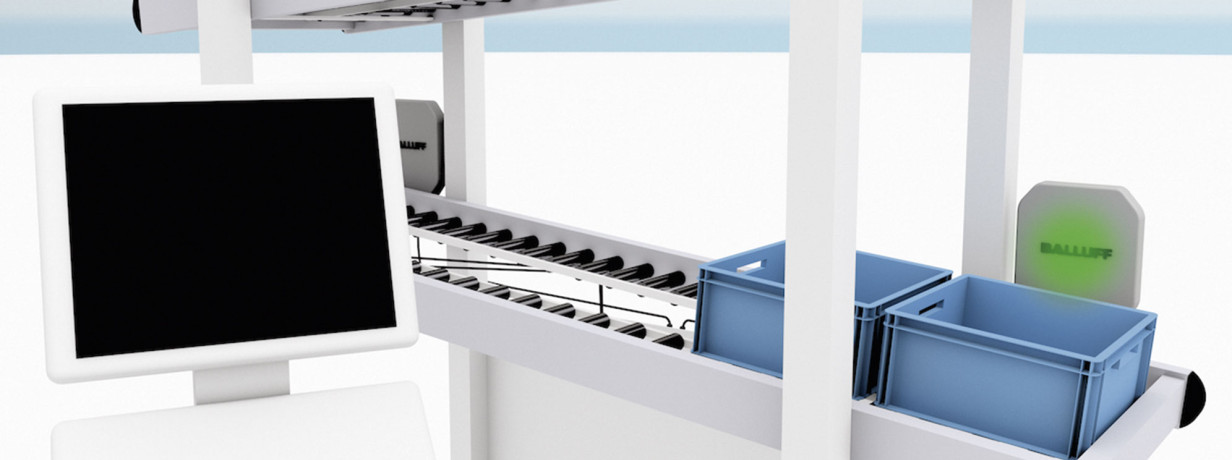Identifying – E-Kanban
Ensuring material supply on the production line using RFID

With an electronic kanban (e-kanban) system you can use various technologies to control the use of components and materials in the production process. E-Kanban differs from traditional kanban in the fact that conventional elements such as kanban cards are replaced by barcodes or RFID tags.
Application examples
In a typical e-kanban system equipment such as small load carriers are fitted with writable RFID tags (data carriers). Material consumption data are then available in real time and can be processed by an ERP (Enterprise Resource Planning) system for restocking. The data for the current production process, which are available at the press of a button, ensure a constant, always transparent material flow, and inventory is reduced to a minimum.
In addition, you can integrate vendors using the real time available information for material consumption. This enables the entire supply chain to be optimized for just-in-sequence logistics.
RFID technologies
Selecting the right RFID technology (HF or UHF) is based on the container type and the ambient conditions of your application:
Data carriers are available for both technologies in a variety of formats with various characteristics. If you need to store large amounts of data directly on the data carrier in your e-kanban system, HF data carriers for example with large memory capacity are the right choice.
HF read/write heads are available with or without integrated processor unit in various form factors. UHF antennas are often used when the e-kanban system is part of a cross-process logistics concept. Then longer read distances and simultaneous detection of multiple objects is possible. However, it is also possible to detect a single targeted object at close range.
Processor units allow you to operate up to four read/write heads or antennas at different frequencies and connect to the control level through various fieldbuses.
